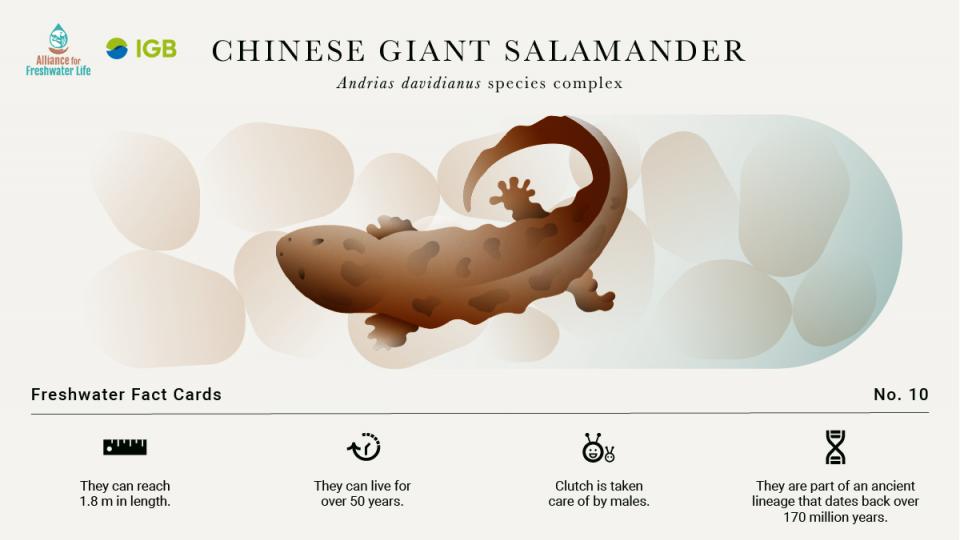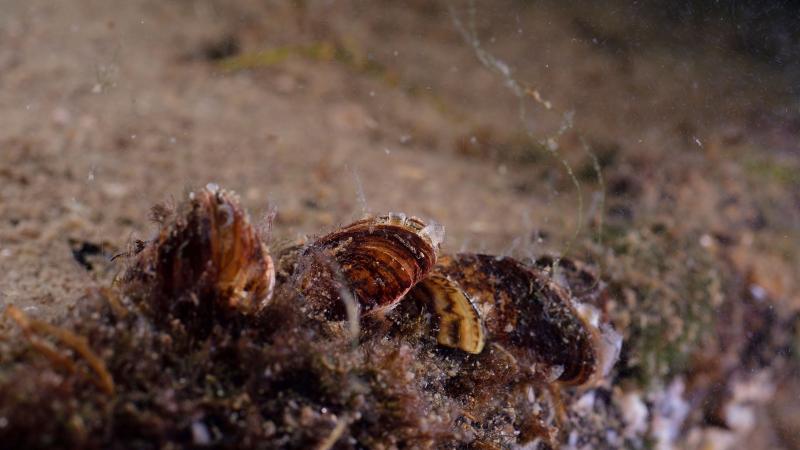
- They are endemic to China, and occur in mountain streams.
- They are expertly camouflaged against the rocky stream bottoms.
- Previously, it was considered a single species, but recently discovered to be at least five cryptic genetic lineages (perhaps species).
- It is possible that the southern species Andrias sligoi is the largest living amphibian.
- They are the largest of the few living species of ancient salamanders (family Cryptobranchidae).
- Large individuals can reach a body mass of 50 kg.
- Females lay eggs in underwater caves guarded and cared for by males for many weeks.
- Major threats to them include overexploitation, habitat degradation, and unintended admixture by cross breeding between cryptic lineages.
- They are farmed for meat in China, which is considered as a threat to wild populations.
- The Chinese giant salamander has been introduced to Japan and is a threat to the native Japanese giant salamander.
- It is assessed as Critically Endangered on the IUCN Red List.

They can reach 1.8 m in length. They can live for over 50 years. Clutch is taken care of by males. They are part of an ancient lineage that dates back over 170 million years.

Previously, it was considered a single species, but recently discovered to be at least five cryptic genetic lineages (perhaps species). They are expertly camouflaged against the rocky stream bottoms. It is possible that the southern species Andrias sligoi is the largest living amphibian. They are farmed for meat in China, which is considered as a threat to wild populations.






